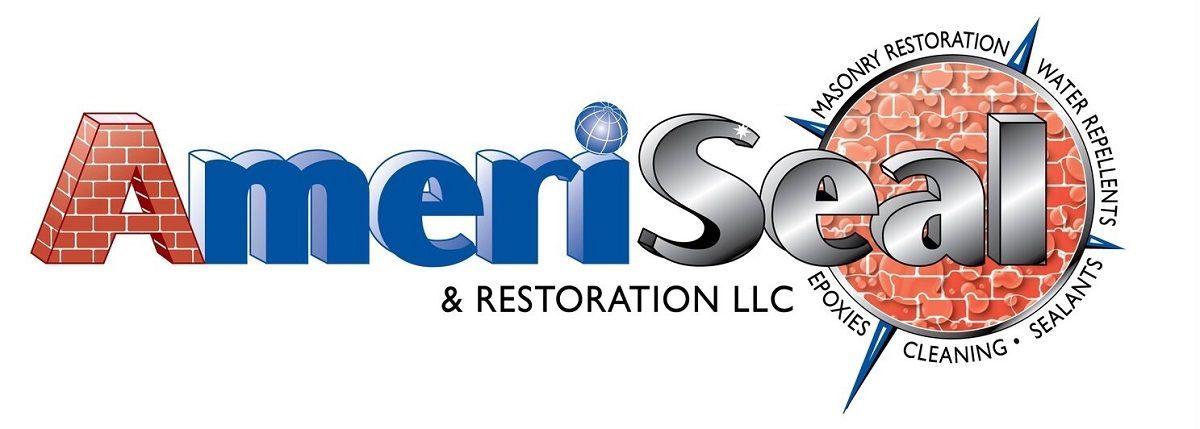CAULKING | JOINT SEALANTS
Preparation is step one when applying Joint Sealants and Waterproof Coatings - We pressure wash the area first!
Caulking of Construction Joints for Extended Substrate Lifespan
In order for a structure and its concrete to have a long life, prevention of potential damage is a critical step. Preventative steps must protect the structure and all of its components from: water penetration, gap formation, and settling. There are several types of joints found in buildings, created purposely, for various tasks, these are: Construction Joints, Expansion Joints, Contraction Joints, and Isolation Joints.
Expansion joints are made to move, either slightly or severely, as materials heat up or cool down, this type of joint is found often in concrete. Joint sealants, also called caulking, have been long used to seal, protect, and prevent damage at the expansion joints. Even before the invention of concrete, joint sealants were needed for wood, stone, and brick (and still are!) to keep water out, and protect against other intrusions. They used to be made from pitch, tar, and/or clay, however the modern variants are made from Silicone, Polyurethane, or a Hybrid.
What is a Joint Sealant?
Caulking sealants (aka joint sealants) are made from a resin and a hardener that create a chemical reaction to protect various concrete joints from damage due to the intrusion of water underneath the concrete slab. When water is able to enter between slabs freely, it pools underneath and freezes in the winter, displacing the concrete above. Joint Sealants can be water-based or solvent based, and a third catagory, gel-based was created for high-performance applications, such as commercial spaces that recieve a great deal of traffic.
The most important step for applying joint sealants is to thoroughly clean the surface before application. We use commercial pressure washers with spinning head attachments, because of their superior cleaning abilities, and air compressors to blow out crevices.
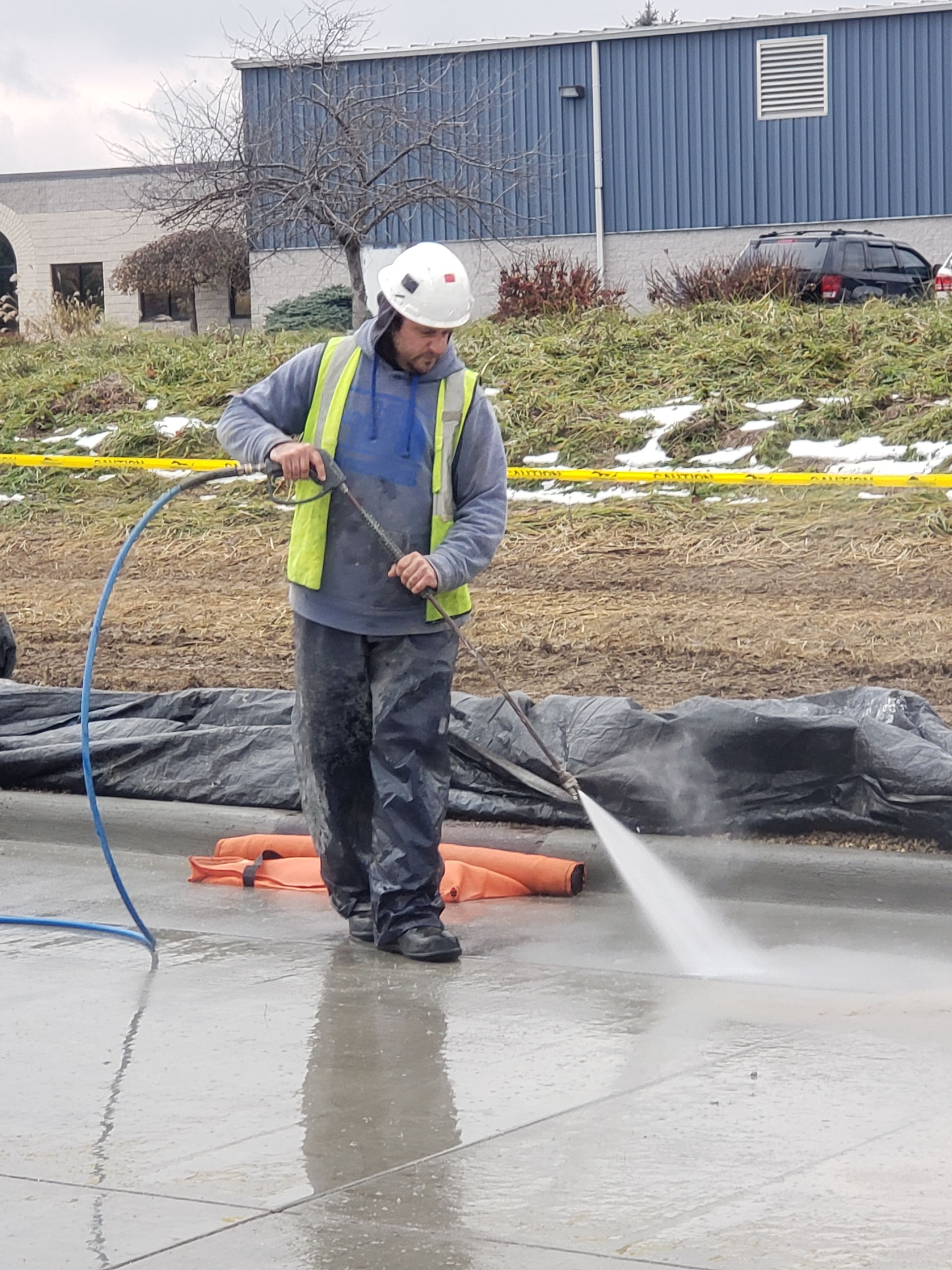
What type(s) of Joint Sealant does Ameriseal and Restoration use?
Joint sealants are purpose made, considering: temperature, materials, joint depth, expected expansion, and even color-matching. This creates a lot of variance between products, and for many contracts, and an architect will usually approve a specific joint sealant for the job.
When an architect has not specified a type and brand of caulking to use, Ameriseal most often uses these four types: Dow 790, Dow 795, Tremco Dymonic FC and Sika 2C NS. What about these four joint sealants makes them our most often used caulking products? Lets break it down!
Silicone Joint Sealants
Dow 790 and 795 are both silicone joint sealants. Silicone caulking is used when an expansion joint or control joint experiences a lot of movement, and the caulking needs to move with the concrete while still remaining attached. Dow 790 silicone is best used for Masonry-to-Masonry caulk joints, while Dow 795 is best used for Masonry-to-Metal caulk joints.
Ameriseal uses these two silicone joint sealants in particular because they can be applied down to -20 degrees, cold Ohio weather isn't an issue with these! Both of these are 'Non-Sag' sealants, meaning they can be used in slanted or vertical applications and do not succumb to gravity. Any application that is at a downward angle, such as around a window or frame, is where Non-Sag is crucial to a good looking sealant application.
Dow 790 and 795 are also highly durable and can last upwards of 20 years – Silicone-based joint sealants come at a higher cost, but the experts agree that it is worth it, they provide 4x the lifespan over polyurethane sealants in optimal settings.
Polyurethane Joint Sealants
When a polyurethane caulking has not been pre-chosen by an architect, Ameriseal typically uses two different types and brands for polyurethane joint sealants: Tremco Dymonic FC and Sika 2C NS. Polyurethane joint sealants are ideal for joints that do not experience much movement/expansion, around 25-35% and they can be used to caulk any substrate. Both of these are also 'Non-Sag' sealants, and can be used in vertical or horizontal application.
These Polyurethane joint sealants state that they can be used in temperatures down into the 40's, but Ameriseal has letters from these two manufacturers stating that they can safely be applied down to 20 degrees, giving us a much longer window for when we can complete these types of contracts. Polyurethane caulking is less expensive than its silicone counterpart but does not last nearly as long, averaging 5-7 years in an optimal setting.
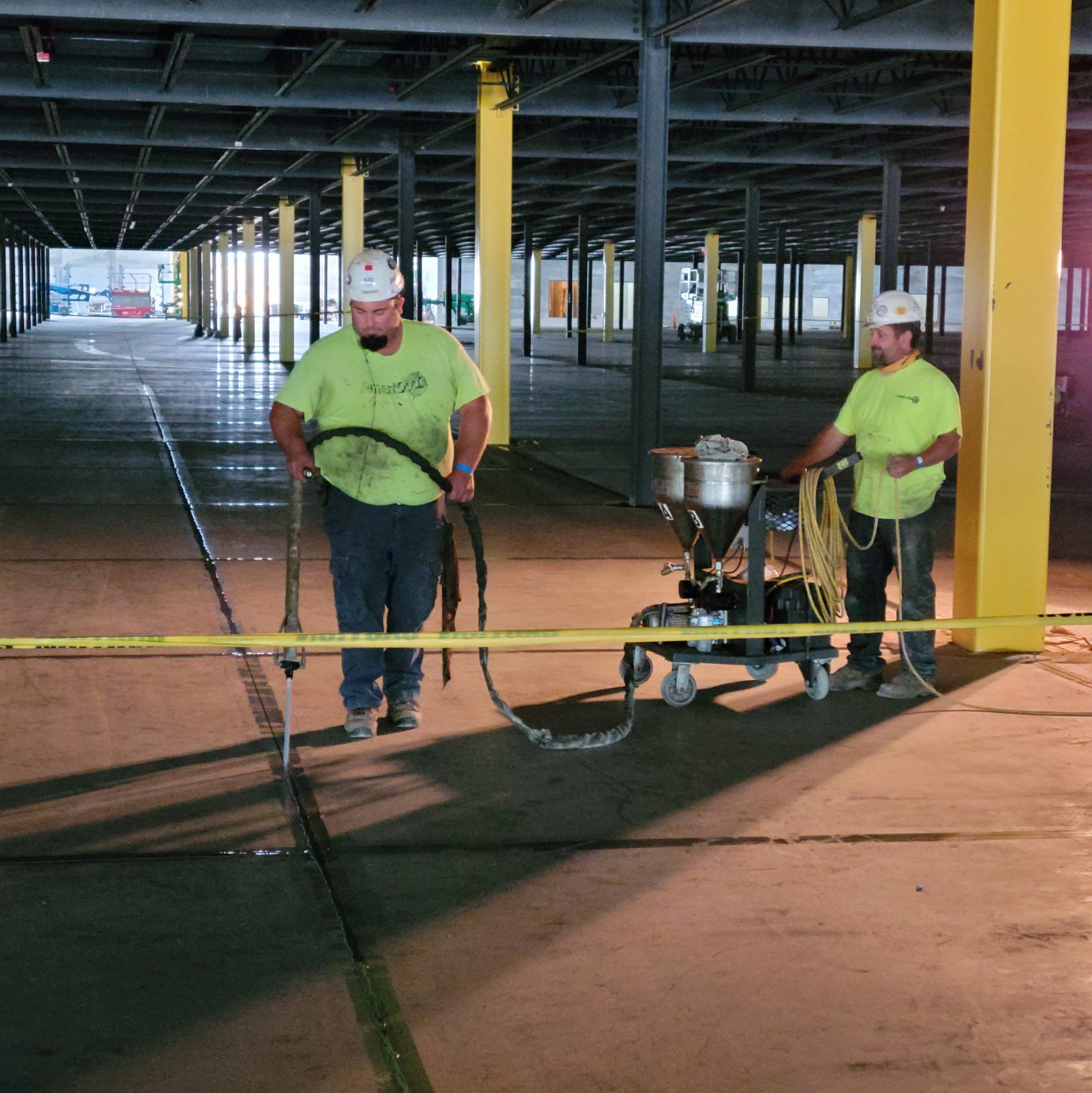
The Key to Long Lasting Concrete and Masonry - Pros of Caulking | Joint Sealants
Caulking with joint sealant has several key benefits that make them the best product for caulking masonry and concrete joints: Adhesion, Resistance, Flexibility, and Versatility. Lets go over them...
Adhesion: These sealants can adhere to just about everything, including: plastic, metal, stone, concrete, and wood. This allows the sealant to 'become one' with whatever it is applied to. The seal is both air- and water-tight. In the cases of crack repair (see our Epoxy Injection - Commercial Void and Crack Repairs page here) the end result is that the filled void in the concrete is BETTER AND STRONGER than when the concrete was freshly poured!
Resistance: Caulking seals with an air and water tight bond, making it extremely useful when applied to various joints in concrete. It rejects water and stops it from getting underneath the concrete slabs, a problem during the winter months where frozen water pushes concrete slabs out and away, making an uneven surface. You've probably seen this effect on neighborhood sidewalks, with some slabs jutting upward sharply. Since we want to avoid this, caulking with joint sealant is a critical component in damage prevention for long lasting concrete. Concrete that has jutted out of place because of frozen water must be lifted back into place, a process that involves more time and cost to repair.
Flexibility: Certain types of caulking sealants need to remain flexible to move with the concrete or stone they are sealed onto. Concrete moves with temperature differences and expands and contracts with hot or cold weather. Joint caulking made to flex will continually seal and protect even as the surface expands and contracts across the joints.
Versatility: Various formulations of caulking sealants provide different and versatile uses. Single component sealant is an easier to use version, focused more towards a DIY market. Two component sealants
are used for professional applications and requires the two components to be mixed just before application. A chemical reaction hardens the resin to form an air and water tight seal on the joints of the stone or concrete.
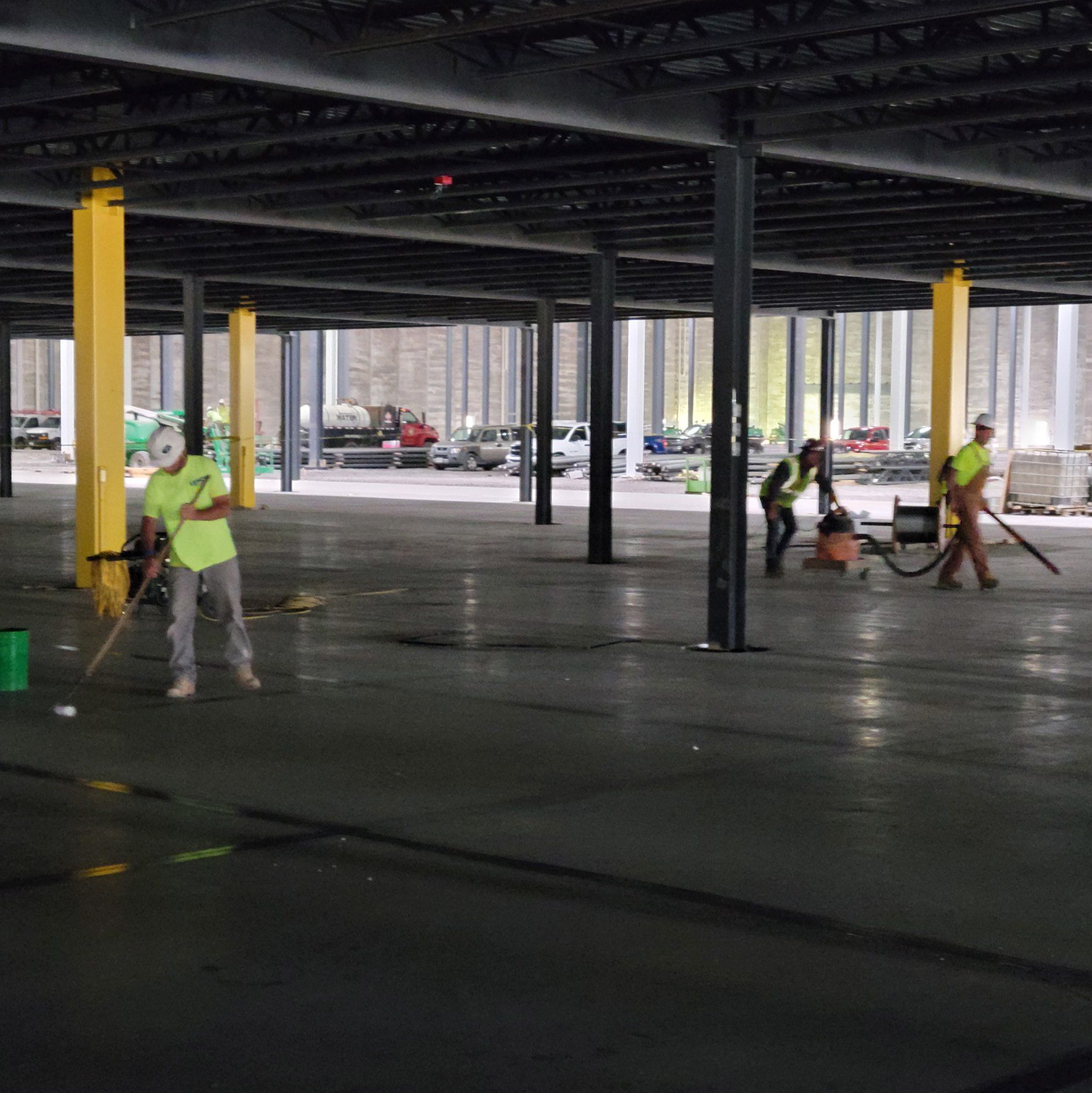
Ameriseal and Restoration applied how much caulking??
Mike, Vice-President of Ameriseal and Restoration, said that he isn't quite sure which of their caulking contracts was the largest, but it is between these two:
- The first was for McMaster Carr in Aurora, where 40,185 lineal feet of caulking was applied, which is just over 7.6 MILES of joint sealant!
- The second was for Lakeview Tower in Cleveland, a 200 foot tall building with 19 floors, where Ameriseal caulked the entire exterior from swing stage scaffolding.
Mike also mentioned Ameriseal and Restoration's most difficult job, which, again, is tied between two contracts:
- The East Ohio Building, aka the Residences at 1717, a 275 foot tall building in Cleveland that was restored and required external joint sealing over its entire facade.
- And again, the Lakeview Tower in Cleveland competes for our hardest contract, as well as largest contract. The building required external facade caulking from a swing stage scaffold, requiring our team to be securely attached to a mobile platform, hanging off of the building's side, nearly 200 feet high.
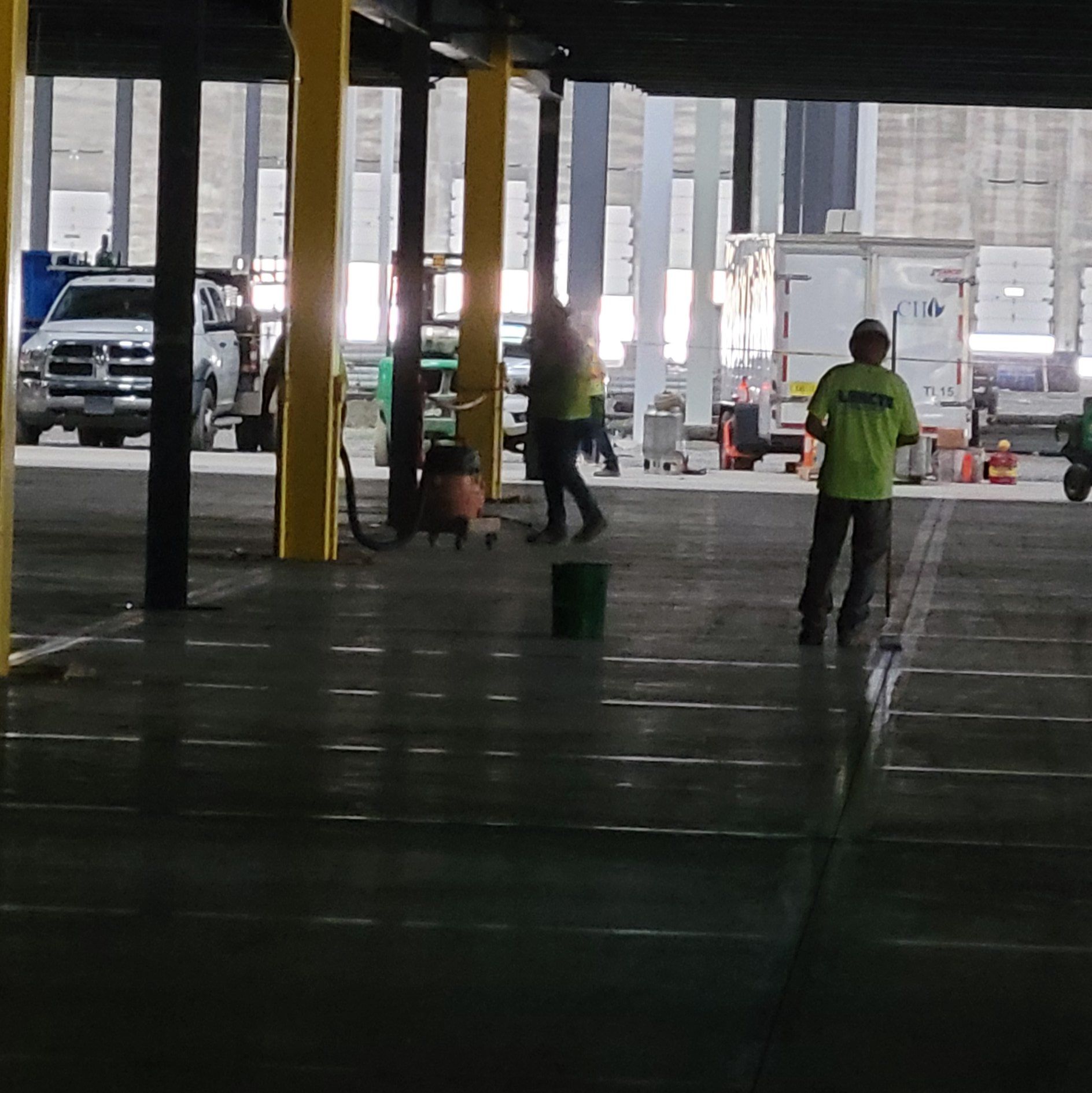
Ohio Plow Trucks - The Destroyer of Outdoor Sealed Expansion Joints
In all honesty, Ohio winters are not kind to caulking applied to concrete joints, more specifically the plow trucks that deal with Ohio winters, are not kind to the caulking in expansion joints. Plows, in their efforts to remove all of the snow that falls, chew up the caulking in expansion joints much more quickly than in our Southern States that receive little to no snowfall.
Because of the aggressive nature of plows, expansion joints do not last as long outdoors as they do in indoor areas and other states. We see them last a few years before they are too chewed up to function as a water barrier. Expansion joint caulking that is exposed to daylight should be inspected regularly and replaced as needed.
Indoor caulking, such as in a warehouse or parking garage does not sustain the kind of damage that caulking exposed to the sky will see, because snow mainly stays off of these covered spaces. Indoor caulking can last 5-7 years with Polyurethane and up to 20 years with Silicone.
Beyond a longer lifespan, why caulk with joint sealants?
In addition to adding years onto the lifespan of your concrete and stone, why should you have your masonry joints caulked with joint sealants? We came up with three more reasons!
Aesthetics: Joint sealants can have tint added to them, to increase the attractiveness of the concrete and to enhance the overall look of the area. Warm tones give a softer look and a more inviting demeanor, while cooler tones give a more clinical setting suitable for a hospital, industrial or laboratory setting. Or the tint can even be used to better blend the colors of the concrete into a more uniform tone.
Integrity: Because joint sealants bond strongly to surfaces where they are applied, and resist all water, they will help to keep your concrete in place for a longer amount of time than unprotected concrete. This helps to preserve the structure as a whole, and avoid jagged, out of place concrete slabs.
Freeze-Thaw Cycle:
This is a vicious phenomenon found in parts of America that get winter weather below freezing, like Northern Ohio where Ameriseal is located. During the warmer temperatures of the daytime, ice melts and water seeps into cracks found in concrete, such as between the slabs at the expansion joints. As the temperature drops overnight, the water freezes and POP!...off comes a chunk of concrete. This will happen over and over, creating a scarring effect, referred to as Spalling. It is a very noticeable type of damage, once you have seen it, its unlikely to be forgotten, and only new concrete can solve the problem once it gets to that point. Caulking sealants stop this from happening below the slab, offsetting its height.
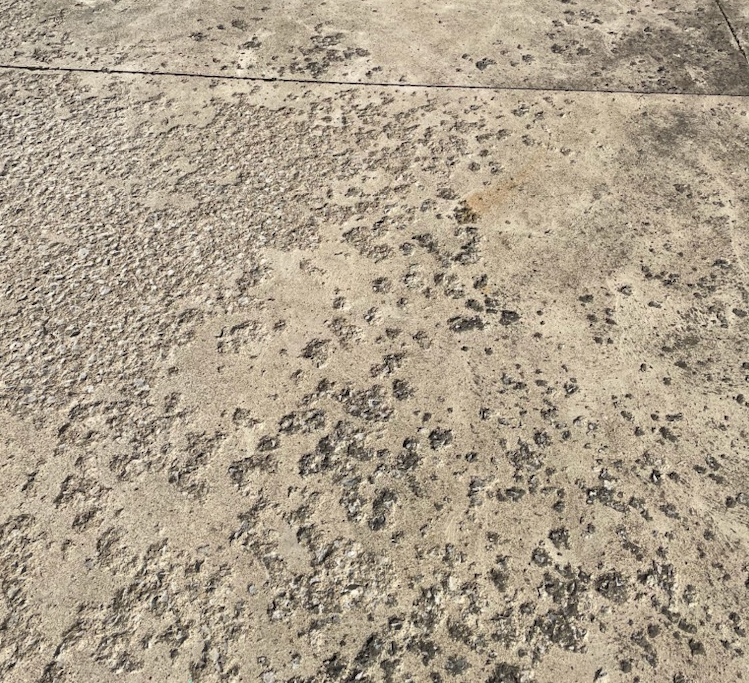
To Top it Off - Waterproof Sealant for Surfaces of Concrete
Ameriseal also offers waterproofing sealants for the surface of the concrete slab! Together the sealant on top and the caulking between the slabs create a total protection barrier that will greatly extend the life of your concrete. This prevents spalling, as pictured above, which is a unique looking scarring of concrete. It happens when water is able to enter microcracks, and freeze, called the Freeze-Thaw Cycle.
These two processes, Caulking and Waterproof Sealants, completely seal your concrete and its joints, protecting it against water damage and extending the lifetime of the slabs. Its a time-tested approach that will allow your investment to last for decades to come! Call AmeriSeal today 330-794-8040 or send us a message at any time after hours! We have answers to your questions, with knowledgeable staff who love to talk about Concrete! Trust Ameriseal with your Ohio Concrete, Stone, Brick and Masonry, Trust the Best.
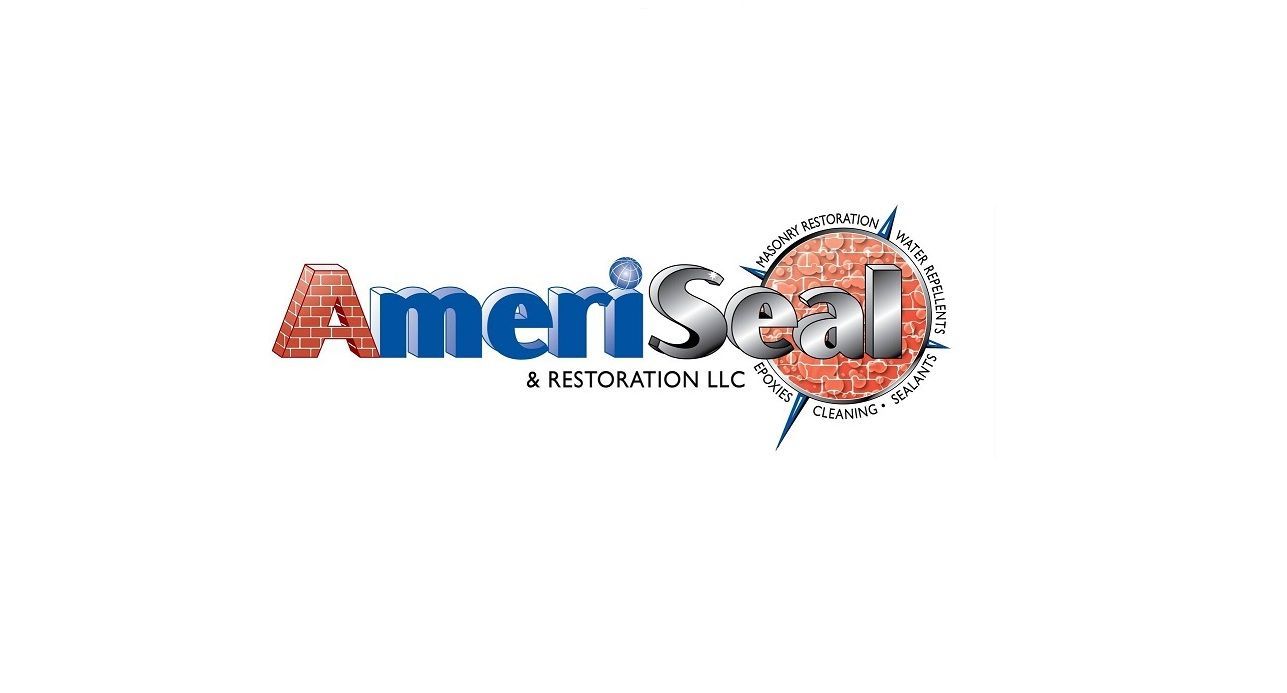
Monday - Friday 7am - 4pm; Closed Weekends
AmeriSeal and Restoration | All Rights Reserved | (330) 794-8040 | 685 High Grove Blvd Akron, OH 44312
Site Design: Ally Digital LLC
